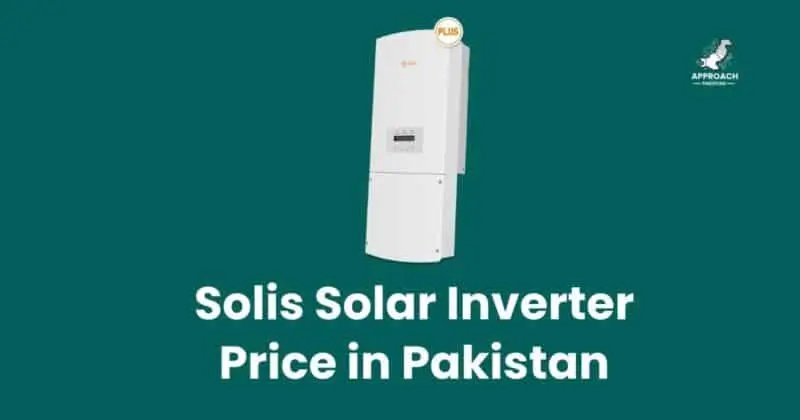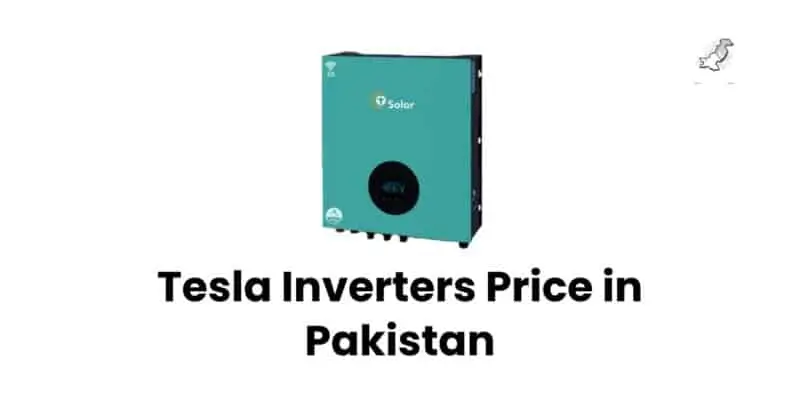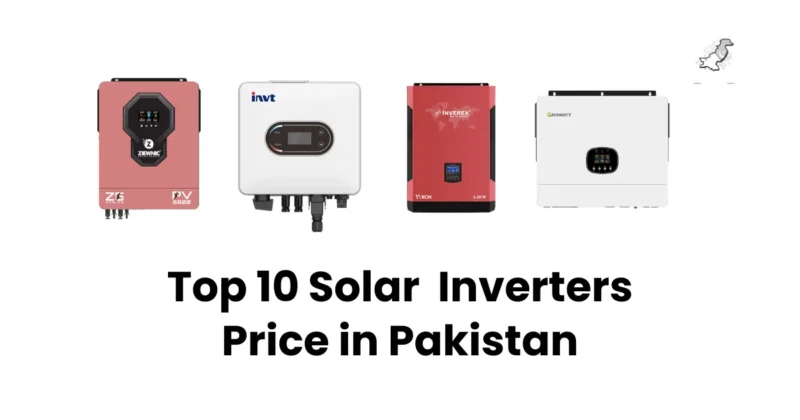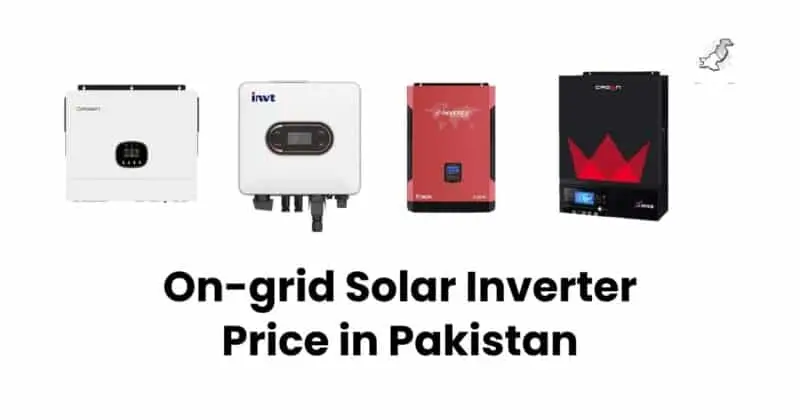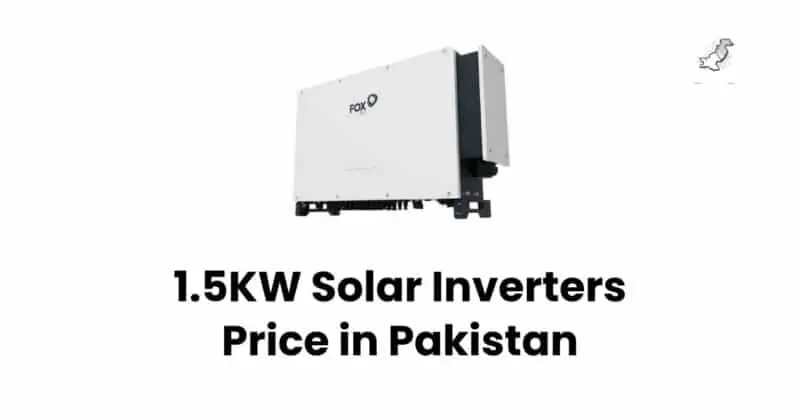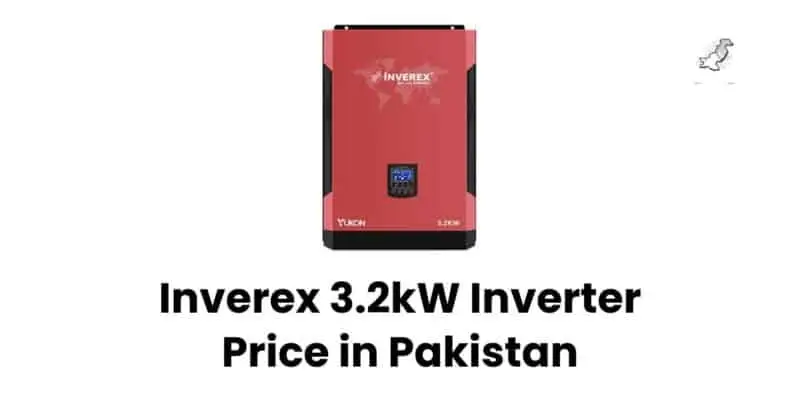Hybrid Solar Inverter Price in Pakistan 2025 – Best Brands & Buying Guide
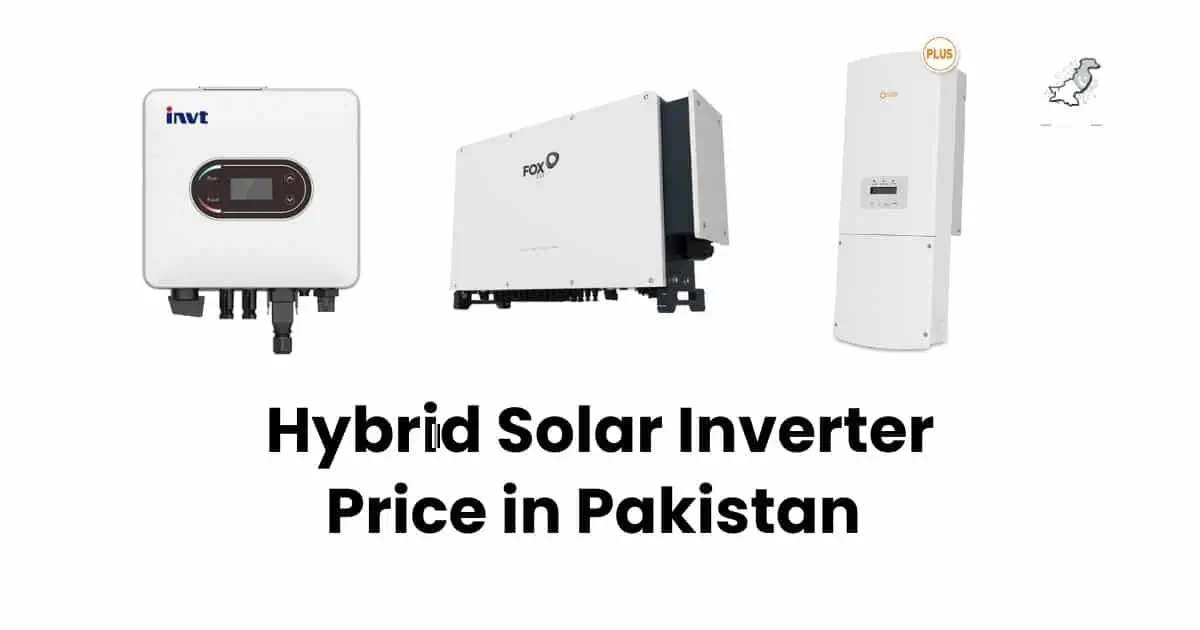
Hybrid solar inverter prices in Pakistan range from PKR 85,000 for basic 3kW systems to over PKR 1,500,000 for premium 50kW+ commercial units. Popular residential models like Inverex 6kW cost around PKR 310,000, while imported brands like Solis and GoodWe offer competitive alternatives between PKR 180,000-450,000 depending on capacity and features.
Introduction
Your electricity bill keeps climbing every month. Power outages disrupt your daily routine just when you need electricity most. You’re tired of being at the mercy of an unreliable grid system that drains your wallet.
Here’s the good news: hybrid solar inverters can slash your electricity bills by 70-80% while giving you energy independence. No more worrying about load shedding or surprise rate hikes from your utility company.
But here’s the challenge – navigating Pakistan’s solar market feels like walking through a maze blindfolded. Hidden installation costs, confusing technical specifications, and pushy salespeople make finding the right system overwhelming.
This guide cuts through the confusion. You’ll get transparent pricing, honest brand comparisons, and practical advice tailored specifically for Pakistani conditions..
Executive Summary & Quick Price Overview
2025 Price Range Summary
| Capacity | Price Range (PKR) | Ideal For | Monthly Savings |
| 3kW | 85,000 – 240,000 | Small homes (2-3 rooms) | 8,000 – 12,000 |
| 5kW | 180,000 – 370,000 | Medium homes (3-4 rooms) | 15,000 – 20,000 |
| 6kW | 155,000 – 450,000 | Large homes (4-5 rooms) | 18,000 – 25,000 |
| 8kW | 280,000 – 550,000 | Large homes/small offices | 25,000 – 35,000 |
| 10kW | 318,000 – 800,000 | Commercial/large homes | 35,000 – 50,000 |
| 15kW+ | 730,000 – 1,500,000+ | Commercial/industrial | 60,000+ |
Best Value Picks by Budget
Budget Under PKR 150,000:
- MaxPower Suntronic 3kW Pro: PKR 85,000
- Crown Xavier 3kW: PKR 88,000
- Itel 4kW SP-Hybrid: PKR 125,000
Mid-Range PKR 150,000-300,000:
- Inverex Nitrox 6kW: PKR 310,000
- Solis 6kW Hybrid: PKR 260,000
- Knox Krypton 6kW: PKR 160,000
Premium Above PKR 500,000:
- Fronius Symo GEN24: PKR 600,000+
- Huawei SUN2000 15kW: PKR 730,000
- Solis 15kW Three-Phase: PKR 730,000
Market Trends & Predictions
Prices dropped 15-20% in 2024 due to increased local manufacturing. Expect further 10-12% reduction in 2025 as competition intensifies and import duties stabilize.
Understanding Hybrid Solar Inverters
What is a Hybrid Solar Inverter?
A hybrid solar inverter combines grid-tie and off-grid functionality, allowing you to use solar power, store excess energy in batteries, and maintain grid connection simultaneously. It automatically switches between solar, battery, and grid power based on availability and demand, ensuring uninterrupted power supply.
Think of it as having three power sources in one smart system. During sunny days, it runs your home on solar power. Extra energy charges your batteries for nighttime use. When batteries run low, it seamlessly switches to grid power.
This setup gives you the best of both worlds – energy independence during outages and grid backup when needed.
How Hybrid Inverters Work in Pakistan’s Grid System
Pakistan’s unstable grid makes hybrid inverters particularly valuable. They automatically detect grid failures and switch to battery power within milliseconds.
During WAPDA’s scheduled load shedding, your home continues running normally. When the grid returns, the system automatically synchronizes and resumes normal operation.
The inverter also manages net metering if you’re enrolled. Excess solar power feeds back to the grid, earning you credits on your electricity bill.
Benefits for Pakistani Households & Businesses
Energy Security: No more planning life around load shedding schedules. Your refrigerator stays cold, fans keep running, and WiFi never drops during power cuts.
Bill Reduction: Typical households see 70-80% reduction in electricity costs within the first year. That’s PKR 15,000-25,000 monthly savings for average homes.
Property Value: Homes with solar systems sell 8-12% higher than non-solar properties in major Pakistani cities.
Hybrid vs On-Grid vs Off-Grid: Complete Comparison
| Feature | Hybrid | On-Grid | Off-Grid |
| Grid Connection | Yes | Yes | No |
| Battery Backup | Yes | No | Yes |
| Load Shedding Protection | Full | None | Full |
| Net Metering | Yes | Yes | No |
| Initial Cost | Medium | Low | High |
| Maintenance | Low | Lowest | Medium |
| Best For | Most homes | Grid-stable areas | Remote areas |
For detailed analysis of each system type, explore our complete solar system comparison guide to understand which option provides the best value for your specific situation.ers watch exchange rates and time purchases during PKR strength periods.
Comprehensive Price Analysis
3.1 Price by Capacity (1kW to 50kW+)
Residential Systems (1kW-10kW):
| Capacity | Local Brands | Imported Brands | Installation Cost |
| 1.2kW | 69,000 – 85,000 | Not Available | 15,000 – 20,000 |
| 3kW | 85,000 – 180,000 | 150,000 – 240,000 | 25,000 – 35,000 |
| 5kW | 180,000 – 280,000 | 250,000 – 370,000 | 40,000 – 55,000 |
| 6kW | 155,000 – 340,000 | 260,000 – 450,000 | 45,000 – 60,000 |
| 8kW | 280,000 – 390,000 | 420,000 – 550,000 | 55,000 – 75,000 |
| 10kW | 318,000 – 620,000 | 600,000 – 800,000 | 70,000 – 95,000 |
Commercial Systems (15kW-50kW+):
| Capacity | Three-Phase Systems | Installation Cost | Monthly Savings |
| 15kW | 730,000 – 1,200,000 | 120,000 – 160,000 | 60,000 – 80,000 |
| 20kW | 1,100,000 – 1,500,000 | 150,000 – 200,000 | 85,000 – 120,000 |
| 30kW+ | 1,800,000 – 3,000,000+ | 250,000 – 400,000 | 150,000+ |
3.2 Local vs Imported Inverter Pricing
Local Pakistani Brands:
- Pros: 25-40% cheaper, local warranty support, readily available parts
- Cons: Limited advanced features, shorter warranty periods
- Popular: Inverex, MaxPower, Crown, Knox
Imported Brands:
- Pros: Advanced technology, longer warranties (5-10 years), higher efficiency
- Cons: 30-50% more expensive, limited local service networks
- Popular: Solis, GoodWe, Growatt, Huawei, Fronius
The sweet spot? Local brands for budget-conscious buyers, imported for premium features and longer warranties.
Single Phase vs Three Phase Cost Comparison
| Phase Type | Capacity Range | Price Difference | Best For |
| Single Phase | 1kW – 10kW | Base Price | Homes, Small Offices |
| Three Phase | 5kW – 50kW+ | +15-25% premium | Large Homes, Commercial |
Three-phase systems handle larger loads more efficiently but cost 15-25% more than equivalent single-phase units.
Regional Price Variations (Karachi, Lahore, Islamabad)
Karachi: Highest demand, most dealers, competitive pricing
- Average 5-8% below national average
- Best selection of imported brands
Lahore: Growing market, moderate competition
- Prices align with national average
- Strong local brand presence
Islamabad: Emerging market, limited dealers
- 8-12% above national average
- Limited service network
Smaller Cities: Premium pricing due to limited competition
- 15-25% above major city prices
- Consider purchasing from major cities
For region-specific pricing, check our detailed hybrid solar inverter price guides for Karachi, Lahore pricing analysis, and Islamabad market overview.
Seasonal Price Fluctuations
Summer Peak (April-September): Prices increase 8-15% due to high demand Winter Low (October-March): Best deals, 10-20% discounts common Ramadan/Eid: Special promotions, financing offers available
Plan purchases during winter months for maximum savings.
Brand-wise Detailed Analysis
Inverex Hybrid Inverters (Pakistani Brand)
Why Inverex Dominates: Local manufacturing, competitive pricing, nationwide service network.
Popular Models & Pricing:
- Nitrox 3kW (24V): PKR 212,000 – Best for small homes
- Nitrox 6kW (48V): PKR 310,000 – Most popular residential choice
- Nitrox 8kW (48V): PKR 409,000 – Large homes and small offices
- Nitrox 12kW (Three-Phase): PKR 795,000 – Commercial applications
Pros: Local support, competitive pricing, proven reliability in Pakistani conditions
Cons: Limited advanced features compared to imported alternatives
For complete specifications and performance analysis, see our detailed Inverex hybrid inverter pricing guide.
Solis Hybrid Inverters (International)
Market Position: Premium imported brand with strong performance credentials.
Popular Models & Pricing:
- Solis 5kW IP21: PKR 180,000 – Entry-level imported option
- Solis 6kW IP66: PKR 260,000 – Weather-resistant design
- Solis 8kW S6 Pro: PKR 390,000 – Advanced features
- Solis 12kW Three-Phase: PKR 620,000 – Commercial applications
- Solis 15kW Hybrid: PKR 730,000 – Large commercial systems
Pros: High efficiency (98%+), robust build quality, comprehensive monitoring
Cons: Higher price point, limited local service network
GoodWe Hybrid Inverters
Value Proposition: Balance of features and pricing from established Chinese manufacturer.
Popular Models & Pricing:
- GoodWe 3.6kW GW3648D-ES: PKR 264,395
- GoodWe 5kW GW5048D-ES: PKR 316,440
- GoodWe 5kW GW5K-ET: PKR 351,320
- GoodWe 10kW Three-Phase: PKR 450,900
Key Features: Fan-less design, IP65 rating, wide battery voltage range
Best For: Users wanting imported quality without premium pricing
Growatt Hybrid Inverters
Strengths: Proven technology, competitive pricing, good warranty support.
Notable Models:
- Growatt 6kW Hybrid: PKR 300,000-400,000 range
- Growatt 10kW Three-Phase: PKR 500,000-650,000 range
Limited availability in Pakistan but gaining traction through authorized dealers.
Huawei SUN2000 Series
Premium Positioning: Top-tier technology with advanced features.
Popular Models & Pricing:
- SUN2000-5KTL-M1: PKR 180,000
- SUN2000-10KTL-M1: PKR 252,000
- SUN2000-12KTL-M2: PKR 282,000
- SUN2000-15KTL-M2: PKR 312,000
- SUN2000-20KTL-M2: PKR 330,000
Advantages: Industry-leading efficiency, smart monitoring, excellent build quality
Considerations: Higher price point, requires authorized installation
Knox Hybrid Inverters
Emerging Player: Growing popularity due to competitive features and pricing.
Popular Models:
- Knox Krypton 5600 (4kW): PKR 119,000-125,000
- Knox Krypton 7500 (6kW): PKR 160,000-168,000
- Knox Xenon 9000 (6kW): PKR 180,000-200,000
Appeal: Modern features at competitive prices, good warranty support
MaxPower & Other Local Brands
MaxPower Models:
- Suntronic 3kW Pro: PKR 85,000 – Budget champion
- Suntronic 6kW Pro: PKR 140,000-165,000
- Suntronic 8kW Pro: PKR 320,000
Other Local Options:
- Crown Xavier Series: PKR 88,000-345,000
- Long Life Series: PKR 135,000-340,000
- Itel Hybrid Series: PKR 125,000-475,000
Premium Brands (Fronius, SolarEdge)
Fronius Pricing:
- Symo GEN24 Plus 6kW: PKR 600,000+
- Symo GEN24 Plus 8kW: PKR 750,000+
- Symo GEN24 Plus 10kW: PKR 900,000+
Why Premium Costs More: 25-year warranties, advanced monitoring, superior efficiency ratings
For detailed brand comparisons and performance analysis, explore our comprehensive solar inverter brand guide covering all major manufacturers available in Pakistan.
Technical Specifications Guide
MPPT Technology Explained
Maximum Power Point Tracking (MPPT) extracts maximum power from solar panels under varying conditions. It automatically adjusts voltage and current to optimize energy harvest, increasing system efficiency by 15-30% compared to basic PWM controllers.
Modern hybrid inverters include built-in MPPT controllers. Look for units with dual MPPT trackers for better performance when panels face different directions.
Key MPPT Specs to Consider:
- MPPT Efficiency: Look for 99%+ ratings
- Input Voltage Range: Wider range handles more panel configurations
- Number of MPPT Trackers: Dual trackers offer more flexibility
Efficiency Ratings & What They Mean
System efficiency directly impacts your savings. A 95% efficient inverter wastes 5% of solar energy as heat. A 98% efficient unit wastes only 2%.
Efficiency Types:
- Peak Efficiency: Maximum under ideal conditions (95-98.5%)
- Euro Efficiency: Weighted average across conditions (94-97%)
- CEC Efficiency: California standard, realistic performance metric
Real-World Impact: 3% efficiency difference means PKR 2,000-3,000 additional annual savings on a 5kW system.
IP Rating Guide (IP21, IP54, IP65, IP66)
IP ratings indicate protection against dust and water ingress. Pakistani climate demands careful consideration of these ratings.
| Rating | Dust Protection | Water Protection | Suitable Installation |
| IP21 | Basic | Dripping water | Indoor only |
| IP54 | Limited dust | Splashing water | Covered outdoor |
| IP65 | Dust tight | Water jets | Outdoor installation |
| IP66 | Dust tight | Powerful water jets | All outdoor conditions |
Recommendation: Minimum IP54 for Pakistani conditions, IP65+ for coastal areas or exposed installations.
Pure Sine Wave vs Modified Sine Wave
Pure sine wave output protects sensitive electronics and appliances. Modified sine wave can damage modern appliances and reduce their lifespan.
All quality hybrid inverters produce pure sine wave output. Avoid modified sine wave units regardless of price savings.
Why Pure Sine Wave Matters:
- Protects computers, TVs, and appliances
- Reduces electrical noise and interference
- Ensures optimal appliance performance
Battery Compatibility Matrix
| Inverter Brand | Lead Acid | Lithium-Ion | Gel | AGM |
| Inverex | ✓ | ✓ | ✓ | ✓ |
| Solis | ✓ | ✓ | ✓ | ✓ |
| GoodWe | ✓ | ✓ | ✓ | ✓ |
| Knox | ✓ | ✓ | ✓ | ✓ |
| MaxPower | ✓ | Limited | ✓ | ✓ |
Battery Voltage Compatibility:
- 24V Systems: 3kW and below
- 48V Systems: 5kW and above
- High Voltage: 400V+ for commercial systems
Grid Synchronization Features
Essential for net metering and safe grid operation. Look for these features:
- Anti-islanding Protection: Disconnects during grid failure
- Grid Monitoring: Tracks voltage and frequency
- Automatic Reconnection: Resumes grid connection when stable
- Power Factor Control: Optimizes grid interaction
Cost-Benefit Analysis
Total Cost of Ownership Calculator
5kW Hybrid System Example (10-Year Analysis):
| Cost Component | Amount (PKR) |
| Initial Investment | 350,000 |
| Installation | 50,000 |
| Battery Replacement (Year 7) | 150,000 |
| Maintenance (Annual) | 8,000 |
| Total 10-Year Cost | 630,000 |
| Total Savings | 1,800,000 |
| Net Benefit | 1,170,000 |
ROI Analysis by System Size
| System Size | Initial Investment | Annual Savings | Payback Period | 10-Year ROI |
| 3kW | 280,000 | 120,000 | 2.3 years | 328% |
| 5kW | 400,000 | 200,000 | 2.0 years | 400% |
| 8kW | 600,000 | 320,000 | 1.9 years | 433% |
| 10kW | 750,000 | 400,000 | 1.9 years | 433% |
Key Insight: Larger systems offer better ROI due to economies of scale and higher efficiency ratings.
Electricity Bill Savings Projection
Average Pakistani Household (400 units/month):
| Year | Without Solar | With 5kW Solar | Monthly Savings | Cumulative Savings |
| 1 | 240,000 | 48,000 | 16,000 | 192,000 |
| 3 | 792,000 | 158,400 | 16,500 | 633,600 |
| 5 | 1,440,000 | 288,000 | 17,000 | 1,152,000 |
| 10 | 3,360,000 | 672,000 | 18,500 | 2,688,000 |
Assuming 10% annual electricity rate increase
Payback Period by Region
| Region | Average Electricity Rate | Sun Hours/Day | 5kW System Payback |
| Karachi | PKR 24/unit | 6.5 hours | 1.8 years |
| Lahore | PKR 22/unit | 6.2 hours | 2.0 years |
| Islamabad | PKR 20/unit | 5.8 hours | 2.2 years |
| Multan | PKR 21/unit | 7.1 hours | 1.7 years |
| Peshawar | PKR 19/unit | 5.5 hours | 2.4 years |
Southern regions offer faster payback due to higher solar irradiation and electricity rates.
Maintenance Cost Breakdown
Annual Maintenance Costs:
| System Size | Cleaning | Inspection | Parts/Repairs | Total Annual |
| 3kW | 3,000 | 2,000 | 2,000 | 7,000 |
| 5kW | 4,000 | 3,000 | 3,000 | 10,000 |
| 8kW | 5,000 | 4,000 | 4,000 | 13,000 |
| 10kW+ | 6,000 | 5,000 | 5,000 | 16,000 |
Major Replacement Costs:
- Batteries: Every 5-7 years (40-60% of original system cost)
- Inverter: Every 10-15 years (25-35% of original system cost)
For detailed maintenance schedules and cost optimization strategies, see our solar system maintenance guide covering all system types and sizes.
Installation & Setup Costs
Installation Charges by Capacity
| System Size | Basic Installation | Premium Installation | Civil Work |
| 3kW | 25,000 – 35,000 | 40,000 – 50,000 | 15,000 – 25,000 |
| 5kW | 40,000 – 55,000 | 60,000 – 75,000 | 20,000 – 30,000 |
| 8kW | 55,000 – 75,000 | 80,000 – 100,000 | 25,000 – 40,000 |
| 10kW+ | 70,000 – 95,000 | 110,000 – 140,000 | 35,000 – 60,000 |
What’s Included in Basic Installation:
- Panel mounting and wiring
- Inverter installation and configuration
- Basic earthing system
- DC/AC disconnect switches
Premium Installation Additions:
- Surge protection devices
- Advanced monitoring setup
- Aesthetic cable management
- Comprehensive testing and commissioning
Additional Equipment Costs
| Component | Capacity Range | Price Range (PKR) |
| DC Surge Protection | All sizes | 8,000 – 15,000 |
| AC Surge Protection | All sizes | 12,000 – 20,000 |
| Monitoring System | All sizes | 15,000 – 35,000 |
| Battery Cables (per set) | 24V/48V | 5,000 – 12,000 |
| Earthing Kit | Complete | 8,000 – 15,000 |
| Generation Meter | Net metering | 8,000 – 12,000 |
Electrical Work & Permits
Required Electrical Work:
- Load Center Modifications: PKR 15,000-25,000
- New Electrical Panel: PKR 25,000-40,000 (if required)
- Grounding System: PKR 10,000-20,000
- Electrical Inspection: PKR 5,000-8,000
Permit Costs:
- Building Permit: PKR 5,000-15,000 (varies by city)
- Electrical Permit: PKR 3,000-8,000
- Utility Interconnection: PKR 2,000-5,000
Net Metering Setup Costs
| Component | Cost (PKR) | Notes |
| Bi-directional Meter | 15,000 – 25,000 | WAPDA requirement |
| Grid Connection Fee | 5,000 – 10,000 | One-time utility charge |
| Documentation | 3,000 – 5,000 | Application processing |
| Inspection Fee | 2,000 – 4,000 | Utility inspection |
| Total Net Metering Setup | 25,000 – 44,000 | Complete process |
Timeline: 4-8 weeks from application to approval in major cities.
DIY vs Professional Installation
DIY Installation:
- Savings: 50-70% of installation costs
- Risks: Safety hazards, warranty voids, code violations
- Suitable For: Experienced electricians only
Professional Installation Benefits:
- Safety: Licensed electricians handle dangerous electrical work
- Warranty: Full system warranty protection
- Code Compliance: Ensures local electrical code compliance
- Performance: Optimal system configuration and testing
Recommendation: Always use certified installers for hybrid systems due to complexity and safety requirements.
Buying Guide & Decision Framework
Capacity Sizing Calculator
Step 1: Calculate Your Load
| Appliance | Wattage | Hours/Day | Daily Consumption |
| LED Lights (10) | 100W | 8 hours | 800Wh |
| Ceiling Fans (4) | 300W | 12 hours | 3,600Wh |
| Refrigerator | 150W | 24 hours | 3,600Wh |
| TV (LED) | 100W | 6 hours | 600Wh |
| AC (1.5 ton) | 1,200W | 8 hours | 9,600Wh |
| Total Daily Load | 1,850W | – | 18,200Wh |
Step 2: System Sizing
- Required Inverter: 1,850W × 1.25 = 2,313W (choose 3kW)
- Battery Backup: 18,200Wh ÷ 24V = 758Ah (choose 800Ah for 24V system)
- Solar Panel: 18,200Wh ÷ 6 sun hours = 3,033W (choose 3.5kW panels)
Budget-wise Recommendations
Budget Under PKR 200,000:
- MaxPower Suntronic 3kW: PKR 85,000
- Crown Xavier 3.6kW: PKR 118,000
- Knox Krypton 4kW: PKR 125,000
Best Choice: Knox Krypton 4kW for modern features at competitive price
Budget PKR 200,000-400,000:
- Inverex Nitrox 6kW: PKR 310,000
- Solis 6kW IP66: PKR 260,000
- Knox Krypton 6kW: PKR 160,000
Best Choice: Solis 6kW for imported quality with good warranty
Budget Above PKR 500,000:
- Huawei SUN2000 15kW: PKR 730,000
- Fronius Symo GEN24 8kW: PKR 750,000
- Solis 15kW Three-Phase: PKR 730,000
Best Choice: Huawei SUN2000 for advanced technology and monitoring
Quality vs Price Matrix
| Brand Category | Quality Score | Price Level | Value Rating |
| Premium Import | 9-10/10 | High | 7/10 |
| Mid-tier Import | 7-8/10 | Medium | 9/10 |
| Local Premium | 6-7/10 | Medium | 8/10 |
| Local Budget | 5-6/10 | Low | 6/10 |
Sweet Spot: Mid-tier imported brands offer best value combination of quality and pricing.
Warranty Comparison
| Brand | Product Warranty | Performance Warranty | Service Network |
| Fronius | 5-7 years | 25 years | Limited |
| Huawei | 5 years | 10 years | Growing |
| Solis | 5 years | 10 years | Moderate |
| GoodWe | 5 years | 10 years | Moderate |
| Inverex | 2 years | 5 years | Excellent |
| Knox | 2 years | 5 years | Good |
Service Network Importance: Local brands excel in after-sales support, while imported brands offer longer warranties but limited service centers.
After-sales Service Network
Service Availability by Brand:
| Brand | Major Cities | Tier-2 Cities | Remote Areas | Response Time |
| Inverex | Excellent | Good | Moderate | 24-48 hours |
| MaxPower | Good | Moderate | Limited | 48-72 hours |
| Knox | Good | Moderate | Limited | 48-72 hours |
| Solis | Moderate | Limited | Poor | 3-7 days |
| Huawei | Good | Moderate | Poor | 2-5 days |
Recommendation: Factor service availability into decision, especially for remote installations.
For personalized system recommendations based on your specific needs and budget, use our interactive solar system advisor that considers your location, load requirements, and preferences.
Future Trends & Market Outlook
Technology Advancements
Emerging Technologies:
- AI-Powered Optimization: Smart inverters that learn consumption patterns
- Blockchain Integration: Peer-to-peer energy trading capabilities
- Enhanced Storage: Longer-lasting, faster-charging battery integration
- Grid Services: Advanced grid support and stabilization features
Expected Timeline:
- 2025: AI optimization becomes standard in premium models
- 2026: Enhanced battery integration with 15+ year warranties
- 2027: Mainstream adoption of vehicle-to-grid capabilities
Price Trend Predictions
Short-term (2025-2026):
- 5-8% Annual Decline: Continued cost reduction due to scale
- Local Manufacturing: 15-20% price advantage for Pakistani brands
- Import Dependency: Gradual reduction as local capacity grows
Medium-term (2027-2030):
- Price Stabilization: Market maturity leading to stable pricing
- Feature Competition: Focus shifts from price to features and service
- Premium Segment Growth: Increased demand for advanced capabilities
New Product Launches 2025
Anticipated Releases:
- Inverex Nitrox Pro Series: Enhanced efficiency and monitoring
- Solis 4th Generation: Improved thermal management and features
- Knox Advanced Series: IoT integration and smart grid capabilities
- Local Battery Solutions: Pakistani-manufactured lithium storage
Market Impact: New releases typically drive 10-15% price reductions in previous generation models.
Market Growth Projections
Market Size Predictions:
- 2025: 2.5 GW annual installations
- 2027: 4.0 GW annual installations
- 2030: 8.0 GW annual installations
Driving Factors:
- Government Support: Continued policy backing and incentives
- Cost Reduction: Improving economics of solar investments
- Grid Instability: Ongoing reliability issues driving self-sufficiency
- Environmental Awareness: Growing consciousness about climate impact
Regional Growth:
- Urban Areas: 25-30% annual growth in major cities
- Rural Areas: 40-50% growth as costs become accessible
- Commercial Sector: 35-40% growth driven by energy cost savings

